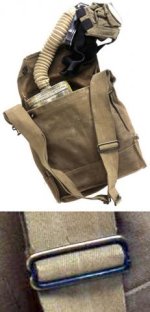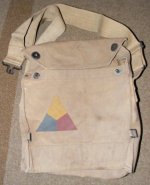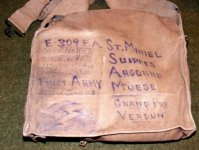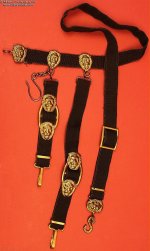Navigation
Install the app
How to install the app on iOS
Follow along with the video below to see how to install our site as a web app on your home screen.
Note: This feature may not be available in some browsers.
More options
You are using an out of date browser. It may not display this or other websites correctly.
You should upgrade or use an alternative browser.
You should upgrade or use an alternative browser.
1700's British sword buckle found in Bradenton fl
- Thread starter Storageunit1
- Start date
Storageunit1
Jr. Member
- Mar 5, 2023
- 88
- 462
- Thread starter
- #21
Lol...yes I know Jeff...I stopped today and showed him the buckle....Close.....JEFF
villagenut
Gold Member
Small world we live in.... did you dig this and give it to him?

- Aug 19, 2014
- 38,251
- 138,921
- Detector(s) used
- JW 8X-ML X2-VP 585
- Primary Interest:
- All Treasure Hunting
After VillageNut's confirmation... Congrats StorageUnit1 on a stellar find... and this should absolutely make BANNER.
Well done and keep up working the area your in... stellar find.
Well done and keep up working the area your in... stellar find.
scruggs
Gold Member
Nice find!
Kray Gelder
Gold Member
- Feb 24, 2017
- 7,005
- 12,554
- Detector(s) used
- Fisher F75
- Primary Interest:
- Metal Detecting
An awesome find. Must have been in a bone-dry area to have none of the usual patina on the buckle or hardware.
villagenut
Gold Member
Very sandy soil here in the part of Florida he dug it. It is kind to brass artifacts, but generally more patination on the surface.An awesome find. Must have been in a bone-dry area to have none of the usual patina on the buckle or hardware.
villagenut
Gold Member
Expanding on an earlier post a where I mentioned the plantation at Negro Point.....in John Lee Williams account he says it was established by Ambrister and Arbuthnot, two Brittish citizens who were aiding runaway slaves, who had joined up with Black Seminoles. This was their way of continuing the work of George Woodbine, a Brittish officer who helped establish Negro Fort near St. Augustine. Both Ambrister and Arbuthnot were tried and convicted by Andrew Jackson for their aiding the blacks as they did. One was hung and the other was shot in a firing squad. Eventually, Jackson pushed the blacks further south and as they settled in there maroon communities, he would give chase, kill them, or return them to their previous deplorable state. Thus came the ruins of the plantation at Negro Point the John Lee Williams wrote about. So, yes the British were here as they assisted in setting up new communities for those oppressed byAndrew Jackson........now whether this buckle is part of the evidence is anybody guess....which is the case unless more proofs are added to the pot. But there is historical accounts that do shed light on what facts we may know.
villagenut
Gold Member
I would like to see the backside of the buckle though.
- Aug 19, 2014
- 38,251
- 138,921
- Detector(s) used
- JW 8X-ML X2-VP 585
- Primary Interest:
- All Treasure Hunting
I second that.I would like to see the backside of the buckle though.
godisnum1
Silver Member
- May 7, 2005
- 3,652
- 381
- Detector(s) used
- Nokta Legend Pro Pack, Nokta Legend WHP w/ LG24 coil, Nokta Pulse Dive Pinpointer, White's IDX Pro (x2), Vibraprobe 570
- Primary Interest:
- All Treasure Hunting
Those are incredible finds! I'm just over the Skyway in Saint Petersburg and mostly beach hunt, even though I've relic hunted for over 18 years. I got permissions from a couple property owners down there near the Gamble Plantation and detected down there, but never found any period items, sadly. I need to get back down there again at some point with my Legend. There's also another location that I need to poke around as well when I get the chance...
Bran <><
Bran <><
- Feb 3, 2009
- 41,183
- 157,310
- 🥇 Banner finds
- 1
- Detector(s) used
- Deus, Deus 2, Minelab 3030, E-Trac,
- Primary Interest:
- Relic Hunting
It would be great to see the back, wonder if it will happen?I would like to see the backside of the buckle though.
TheCannonballGuy
Gold Member
- Feb 24, 2006
- 6,593
- 13,357
- Detector(s) used
- White's 6000, Nautilus DMC-1, Minelab
- Primary Interest:
- Relic Hunting
StroageUnit1 said:
> Also found these close by [the Double-Lion's-Head buckle].
Several European countries have continued to use that specific form of Double-Lion's-Head buckle into the 20th-Century. (For example, the photo I've attached below shows a Soviet Navy dagger-belt from World War 2.) The four brass finds in your newest photo, which you say you "found these all around the buckle," are the strap-buckle and three strap-adjusters from a World War One gasmask bag strap -- as seen in the other two photos I've attached.
Note that like your lion's-head buckle, they also have almost no "excavated brass" patina on the brass.
In my opinion, combining all this evidence (no patina, double-lions-head buckles were made and issued to 20th-Century Military units, you found WW1-buckles very close by your buckle) pretty much kills the possibility that your lion's-head buckle is from the 1700s.
Please believe me, I take no pleasure in sticking a pin into this balloon. But, facts are facts.
> Also found these close by [the Double-Lion's-Head buckle].
Several European countries have continued to use that specific form of Double-Lion's-Head buckle into the 20th-Century. (For example, the photo I've attached below shows a Soviet Navy dagger-belt from World War 2.) The four brass finds in your newest photo, which you say you "found these all around the buckle," are the strap-buckle and three strap-adjusters from a World War One gasmask bag strap -- as seen in the other two photos I've attached.
Note that like your lion's-head buckle, they also have almost no "excavated brass" patina on the brass.
In my opinion, combining all this evidence (no patina, double-lions-head buckles were made and issued to 20th-Century Military units, you found WW1-buckles very close by your buckle) pretty much kills the possibility that your lion's-head buckle is from the 1700s.
Please believe me, I take no pleasure in sticking a pin into this balloon. But, facts are facts.
Attachments
-
 WW1_gasmask-bacg-strap-adjuster-buckle_TTF_postedbyNjcountyofficer.jpg18.3 KB · Views: 27
WW1_gasmask-bacg-strap-adjuster-buckle_TTF_postedbyNjcountyofficer.jpg18.3 KB · Views: 27 -
 WW1_buckle_gasmask-bag-strap_soldier-marked-bag_frontview_451-1.jpg41.3 KB · Views: 26
WW1_buckle_gasmask-bag-strap_soldier-marked-bag_frontview_451-1.jpg41.3 KB · Views: 26 -
 WW1_buckle_gasmask-bag-strap_soldier-marked-bag_backview_451.jpg61.4 KB · Views: 27
WW1_buckle_gasmask-bag-strap_soldier-marked-bag_backview_451.jpg61.4 KB · Views: 27 -
 buckle_lion-&-snake_WW2-Russian-Navy_Officer-daggerbelt_TN_ID-by-CharlieP.jpg83.6 KB · Views: 28
buckle_lion-&-snake_WW2-Russian-Navy_Officer-daggerbelt_TN_ID-by-CharlieP.jpg83.6 KB · Views: 28
Davers
Gold Member
- Jan 8, 2013
- 8,170
- 7,206
- Detector(s) used
- Whites Spc xlt & Tesoro Tejon- Now back ...Fisher 1266-X. TRX Pointer. New .Teknetics G2 + . New AT Pro .
- Primary Interest:
- All Treasure Hunting
Great research there Mr . "TheCannonballGuy".StroageUnit1 said:
> Also found these close by [the Double-Lion's-Head buckle].
Several European countries have continued to use that specific form of Double-Lion's-Head buckle into the 20th-Century. (For example, the photo I've attached below shows a Soviet Navy dagger-belt from World War 2.) The four brass finds in your newest photo, which you say you "found these all around the buckle," are the strap-buckle and three strap-adjusters from a World War One gasmask bag strap -- as seen in the other two photos I've attached.
Note that like your lion's-head buckle, they also have almost no "excavated brass" patina on the brass.
In my opinion, combining all this evidence (no patina, double-lions-head buckles were made and issued to 20th-Century Military units, you found WW1-buckles very close by your buckle) pretty much kills the possibility that your lion's-head buckle is from the 1700s.
Please believe me, I take no pleasure in sticking a pin into this balloon. But, facts are facts.
It's a nice looking find & I do hope it's from the 1700's .
villagenut
Gold Member
I am not completely convinced in it being modern 20th century as suggested.....at the same time, for it to be a 18th century drop here in this area would be the needle in the haystack. The other pieces may have nothing to do with the buckle, as we often find old and modern targets on the same site. Patina has bothered me some, but I don't think that rules it modern. I still would like to see the back of it, and hear from some others before killing it.
Top Member Reactions
-
 3473
3473 -
 2101
2101 -
 1987
1987 -
 1105
1105 -
 1046
1046 -
 1028
1028 -
 863
863 -
 841
841 -
 828
828 -
 772
772 -
 749
749 -
 674
674 -
 650
650 -
 579
579 -
 549
549 -
 441
441 -
 432
432 -
 429
429 -
E
411
-
 403
403
Users who are viewing this thread
Total: 2 (members: 0, guests: 2)





